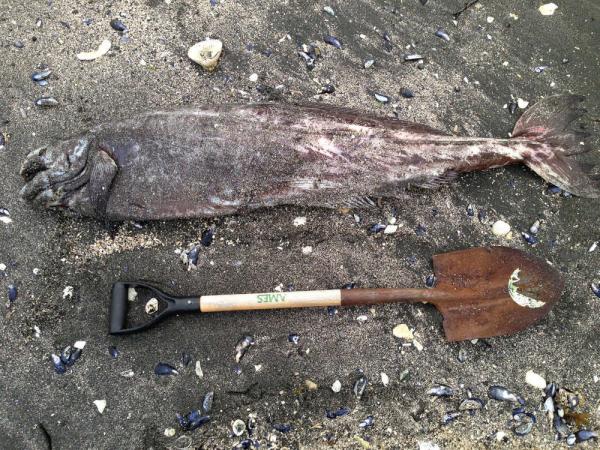
© Michael HaysThis ragfish washed up on the shore of Lena Beach early in the month of August. According to Mary Willson, a retired professor of ecology, ragfish are very distantly related to perch and bass, but they are characterized by a skeleton that is mostly cartilage and flabby flesh. Juveniles look quite different from adults in body shape and fin shape, and adults have no body scales.
Although this gnarly fish isn't uncommon in Alaska waters, it's rare that one of them makes an appearance on shore, especially in Juneau. A dead ragfish, scientific name
Icosteus aenigmaticus, washed up on Lena Beach early this month, Juneau resident Michael Hays told us.
It was longer than a shovel, battered and looking less than appealing. However, this particular specimen is small for its size - ragfish can reach an astounding 7 feet in length, National Oceanic and Atmospheric Administration biologist Dave Csepp said.
The fish are widespread throughout Alaska waters off the Bering Sea slope, hanging out deep, around 1,420 meters. However, they're not as common near Juneau - NOAA's Auke Bay Laboratories usually only get a few sightings of the fish each year, Csepp said in an email. They're most commonly caught in trawl nets or while trolling, and not very often found on beaches.

